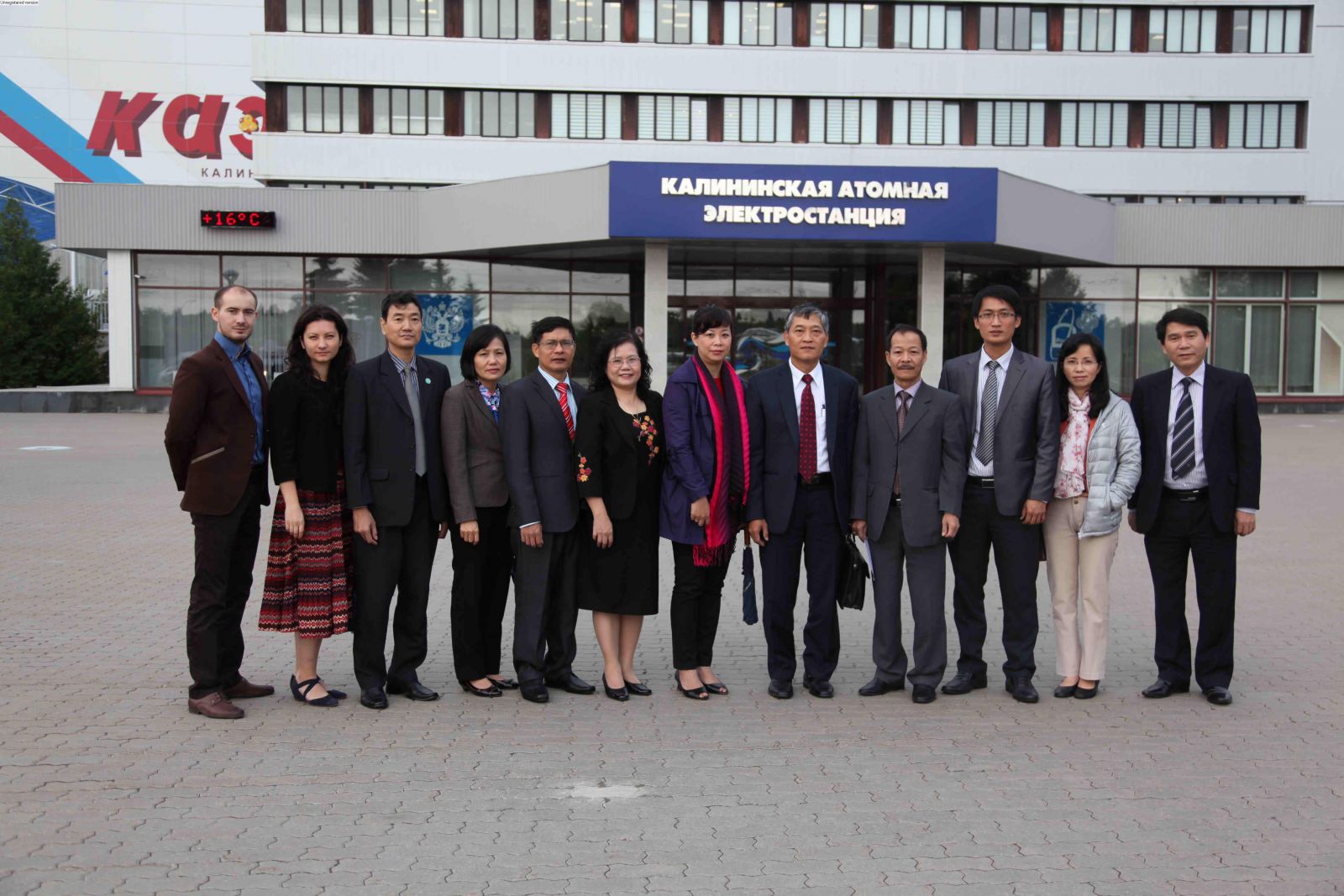On the occasion of Vietnam Science and Technology Day (18th May 2018), the scientific seminar entitled “Applications of Stable Isotopes and Nuclear Safety Analyses” was held on May 11th, 2018 at Nuclear Training Centre (NTC), Vietnam Atomic Energy Institute (VINATOM).
Attending the seminar were specialists from Nuclear Engineering Centre – Institute of Nuclear Science and Technology (INST), Analysis Centre of the Institute for Technology of Radioactive and Rare Elements (ITRRE), NTC and VINATOM.
The seminar comprised four presentations: 1- Dr. TRINH Anh Duc, “Applications of Stable Isotopes in Agricultural, Environmental Research, Climatology, and Water Assessment”; 2- MSc. LE Dai Dien, “Evaluating Source Terms in Nuclear Power Plant Accident”; 3- MSc. DOAN Manh Long, “Research on IVR Principle for VVER1000/V320 in case of High Pressure Severe Accident “; 4- Dr. TRUONG Van Khanh Nhat, “Possibility of Artificial Intelligence Applications in Nuclear Safety”.

Dr. TRINH Anh Duc presented about applications of stable isotopes
We have ever heard about the identification and tracing origins of food or testing athletes using doping to enhance muscle strength. How can these tasksbe carried out? The first presentation of Dr. TRINH Anh Duc has shed the light into this question.
The stable isotopes of an element are atoms with different mass numbers due to different numbers of neutronsthey have in their nuclei and do not undergo radioactive decay over time as unstable isotopes. Stable isotopes exist naturally and differently depending ontheir geographical locations and living organisms,thus, they provide information about the origin of tested specimens. Stable isotopes are often used to trace and determine the origin of organic compounds in the environment and in foods such as: 2H/1H, 18O/16O, 13C/12C, 15N/14N…
Also, Dr. TRINH Anh Duc presented some of his works such as the use of double-isotope (N ) method to determine the source of the impact and to realize the key biogeochemical processes in the Cau River system flowing through Hai Duong, to study the source of CO2 in limestone caves and research on the source and ratio of surface water using the stable isotope of the H12 water molecule.

MSc. LE Dai Dien presented about the issues of source terms
Following the application of stable nuclei is the issues involving in the application of radioactive nuclei. Nuclear power plant is one of the facilitiesto putthe application of radioactive isotope nuclei into practice. In particular, U235is used to generate electricity. However, the fission U235 produce many other radioactive isotopes which are confined in fuel rods under normal operation conditions; whereas, in the case of incident resulting in destruction of fuel cladding, radiation isotopes (mainly in the form of gases) will be released into the interior space of the reactor building and can then be dispersed into the surrounding environment (by wind or water source), which may cause radioactive exposure to public.
How to assess the leakage and levels of radiation exposure caused by these radioactive isotopes? The presentation of MSc. LE Dai Dien provided the fundamental knowledge to answer the above question. Source term may be defined as the leakage of radioactivity out of fuel rods into containment and then being released to the outside environment. The source term refers to the amount, time, history, chemical and physical forms of radioactive nuclei released into the environment, or present in the reactor building during an accident. Additionally, MSc. LE Dai Dien introduced the systems and measures to limit or reduce the releasesfrom nuclear power plants such as using radioactive filters, water spray system in order to deposit radioactivity, etc.

MSc. DOAN Manh Long presented about IVR
One of the methods to prevent the release of a large amount of radioactive isotopes into the reactor building is to ensure the integrity of reactor vessel in the event of severe incident. At present, several reactor technologies have been studied and applied to a safety design which allows flooding cavity and submerging lower head vessel with the aim of cooling external surface of reactor vessel by water. This measure is called In-Vessel Melt Retention through External Reactor Vessel Cooling. IVMR / ERVC), or IVR. After introducing about IVR, MSc. DOAN Manh Long presented a number of study results applying the IVR method for the VVER1000 / V320 reactor using the MELCOR (Method for Estimation of Leakage and Consequences of Release) calculation and simulation program. It was shown that one of the conditions required to ensure the successful implementation of IVR for VVER1000 / V320 is to depressurize for reactor vessel.

Dr. TRUONG Van Khanh Nhat presented about artificial intelligence applications in nuclear safety
The last presenter, Dr. TRUONG Van Khanh Nhat brought an interesting and promising topic to the seminar. The application of artificial intelligence (AI) is strongly utilized in social life, such as in medical treatment, e-commerce, robotic control, etc.Currently, it is being studied and applied in nuclear safety. AI is used in nuclear power plant operations to minimize errors and improve the safety and reliability of nuclear power plants, or used for analyzing and identifying incident scenarios based on abnormal input signals, which helpsto response in a timely manner. However, one of the difficulties of applying AI in nuclear safety is that it requires a large amount of data; moreover, the data in nuclear safety most relies on the simulation without factual data, hence, there is uncertainty in the input data for AI.
The seminar was a great success, bringing specializing knowledge on presented issues and open exchanges among young professionals.
Pham Thi Thu Trang & Doan Manh Long, Nuclear Training Center




